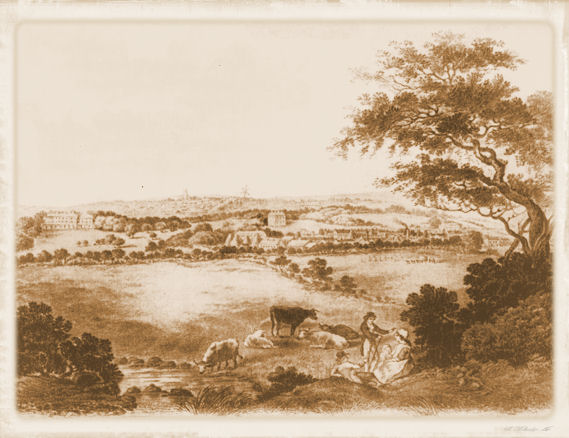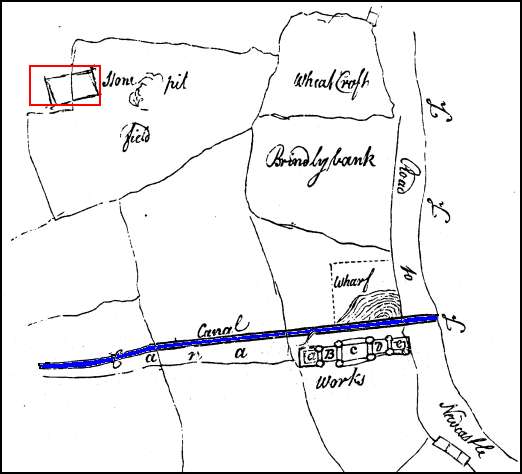|
Etruria
- before Wedgwood
In the Fowlea Brook valley, between
Newcastle-under-Lyme and Hanley was the Ridge House Estate, being in
a valley it was suited as the route for the Trent & Mersey canal
"the land which was formerly known as 'The Ridge
House Estate', were at that time outside the actual Potteries and in
the beautifully wooded and pastured country on the road to
Newcastle-under-Lyme, the ancient borough...."
Artes Etruriae Renascunter
(The Works of Etruria Resurrected)

Etruria Valley prior to 1840
This engraving was discovered in the rubble of the
Etruria Pottery in 1963.
It depicts the rural Etruria Valley prior to 1840, showing clearly
the Wedgwood Pottery Factory in the middle distance with Etruria
Hall behind.

Ridge House Estate
The map above
shows part of the Ridge House Estate bought by Josiah Wedgwood from
Mrs Ashenhurst for £3000 in 1767.
The line of the
new Trent and Mersey Canal has been drawn across the existing
fields (which was not completed until 1777).
Below this the
new factory is shown arranged around a series of courtyards next
to the turnpike road to Newcastle-under-Lyme. On the other side of
the canal in Stone pit field is the site of Etruria Hall (shown in
red).
Shortly after this
map was drawn Josiah Wedgwood purchased land on the other side of
the turnpike road from Mr Egerton thus creating a compact estate of
about 250 acres on the East side of the Fowlea Valley.
The Ridge House estate was "an ideal site, in a valley, sheltered to some extent by the ridges of Wolstanton and Cobridge; coal and clay nearby; an area completely unspoilt by other pot works or manufactories; a canal shortly to be cut in the heart of it, and with great possibilities of building an ideal village."
The ancient Ridge House was demolished long ago - it stood in a field, called the Stoke Pit field. This became the Racecourse pit, erected on the site of the Etruria Racecourse. The racecourse was laid out in 1825. Races were held annually in the first week of August, this being Stoke Wakes Week. The last meeting was in August 1840.
As long ago as 1876 the grounds of the estate were marked by two stones, or earthenware pillars, with the letters R.H. cut deeply into them.
The
History of Etruria; E J D Warrillow

|
![]()
![]()
![]()

![]()
![]()
![]()